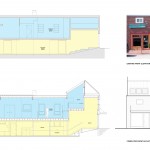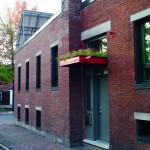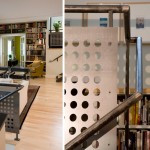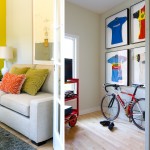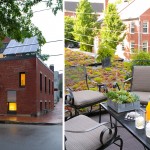Urban Loft
Project Name: Urban Loft
The owners, developers, and designers of this project were seeking a live/work opportunity when they found a derelict 3,000 SF, two-story commercial building in a mixed-use urban neighborhood. After purchasing the building, they designed renovations and additions creating their business offices are on the lower level and their residence in a loft on the upper level. The loft needed two bedrooms, a study, and, if possible, an area for exercising, an ambitious program for 1,400 SF. The office needed seven workstations. The owners were determined to reach a high level of energy efficiency and environmental responsibility without compromising design interest and quality.
Outside, the loft entrance was relocated around the corner on the side street to increase privacy. The planted entrance canopies delight visitors and passers-by, and the office storefront window has been used to display the work of local artists. Above the loft, there is a deck and a vegetated roof. A custom-designed folding steel stair provides easy access to the roof while preserving working space in the study below.
Inside, the tightly organized plans on both floors accommodate all required functions without compromising openness and long interior views. The loft, especially, feels larger than 1,400 SF. The design capitalizes on the odd shape of the building to add spatial interest to the interior. In the loft, the raised study creates a high entry space for the office below, and the new roof monitor above brings south light into areas that are not near windows. Light tubes bring daylight into the interior bathroom.
The loft received a LEED-Home Platinum rating and a HERS rating of 43; it came very close to meeting the requirements of the 1000-Home Challenge. Creating the required high levels of insulation in a brick structure was challenging. Energy use is reduced with high levels of air tightness, insulation (R-35 in walls and R-55 in roof), and triple-glazed fiberglass windows. The loft has a 1 KW solar panel. Using utility bills, energy use in both spaces has been monitored since first occupancy. In the first full year of use, energy consumption in the loft was 20.3 kBtu/SF/yr; that year, the total cost for heat and domestic hot water was approximately $360. The office uses around 27.4 kBtu/SF/yr.
The project is a successful example of a modern live/work combination with a high level of contextual compatibility, environmental responsibility, and energy efficiency.


